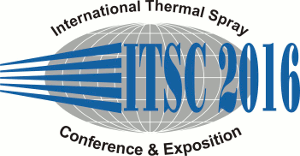
|
4880 |
|
Thursday, May 12, 2016, Room 3E 10:20 AM Characterization & Testing Methods |
|
Preparation and characterization of flame sprayed Cu-coated polyethylene composite coatings |
|
Xinkun Suo / Chinese Academy of Sciences, P.R. China Zhengmei Jia* / Key Laboratory of Marine Materials and Related Technologies, Zhejiang Key Laboratory of Marine Materials and Protective Technologies, Ningbo Institute of Materials Technology and Engineering, Chinese Academy of Sciences, Ningbo, China, 315201, China Peng Xia/ Key Laboratory of Marine Materials and Related Technologies, Zhejiang Key Laboratory of Marine Materials and Protective Technologies, Ningbo Institute of Materials Technology and Engineering, Chinese Academy of Sciences, Ningbo, China, 315201, China Peipeng Jin/ School of Mechanical Engineering, Qinghai University,Xining, China, 810016, China Hua Li/ Key Laboratory of Marine Materials and Related Technologies, Zhejiang Key Laboratory of Marine Materials and Protective Technologies, Ningbo Institute of Materials Technology and Engineering, Chinese Academy of Sciences, Ningbo, China, 315201, China |
|
Cu-coated polyethylene (PE) microparticles were fabricated by electroless plating. A composite coating was deposited using Cu-coated PE powder on steel plates by flame spraying. The microstructures of the feedstock powder and composite coatings were characterized using scanning electron microscopy. The phase composition of as sprayed composite coatings was analyzed using X-ray diffraction. It is found that the Cu/PE dual phases of feedstock powder were retained into coatings. The composite coating presented a uniform and dense microstructure. The anti-corrosion property of sprayed composite coatings was evaluated using salt spray test. The electrochemical behavior of composite coatings (potentiodynamic polarization and electrochemical impedance spectroscopy) was also analyzed. The result shows that the corrosion resistance of composite coatings was close to pure PE coating, and better than pure Cu coating in neutral 3.5 wt.% NaCl solution. The attachment of Bacillus on the surfaces of composite coatings in artificial seawater was characterized in order to investigate the antifouling property of composite coatings. The attached Bacillus was fixed and observed using field emission scanning electron microscopy. The observation result shows that the adhesion of bacterial on the surface of composite coatings significantly decreased compared with that on the surface of pure PE coatings. |